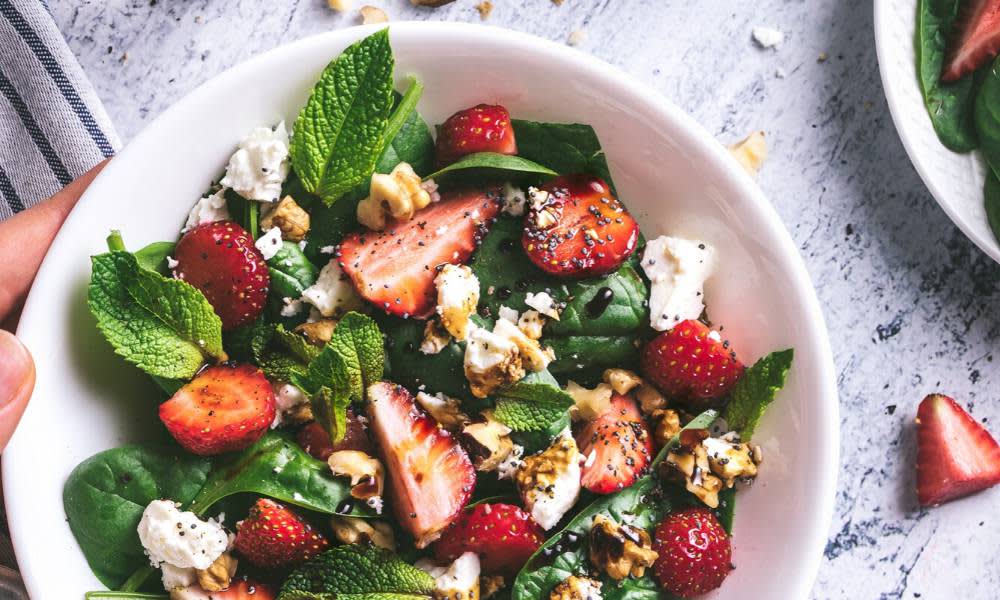The return of the warm weather also sees the return of the salad, and although all things green are thought to be healthy, making a nutritious salad can be easier said than done.
If you consider the extra dressings, cheeses and various other additions that are often added, a previously “healthy” salad can become a high fat meal in no time.
So, to ensure you’re getting the best of both worlds, follow this foolproof guide to making the perfect salad.
Salad greens
Whether you choose cos lettuce, rocket or English spinach, following the mantra “the darker the leaves, the better they are” will ensure that you’re on the right track with your salad base.
Salad leaves are rich sources of fibre, vitamins C and K and generally form the base of a salad that will help to keep you full for a number of hours after eating it.
Plenty of brightly coloured vegetables
The more you include, the better – carrots, cucumber, celery, tomatoes, beetroot, pumpkin and capsicum to name just a few.
If you find yourself struggling with throwing out too much fresh produce at the end of each week, try making one large salad early each week and add the wetter items such as tomatoes later. This way you always have some salad ready to go, and can even add it to sandwiches, wraps and crackers as extra fillers throughout the day.
Some carbs for energy
A plain salad without any bread, crackers or other forms of carbohydrate may appear to be the most healthy, kilojoule controlled option but remember that not eating adequate carbs can leave you feeling unsatisfied, and more likely to binge later in the afternoon. Adding a small amount of low GI carbs in the form of sweet potato, corn, four bean mix or enjoying the salad with a slice of wholegrain bread or crackers will perfectly compliment your lunchtime greens.
Lean proteins for nutrition
Adding a serving of lean protein such as tuna, salmon, egg, chicken breast or other lean meat not only provides filling bulk for your salad but also has much to offer nutritionally.
Protein foods are rich sources of iron, zinc, vitamin B12 and omega 3 fats. Remember, the less processed the better, and if you choose tuna in olive oil, drain off the extra oil to avoid a fat overload.
Added fats
Dressings, nuts, seeds and cheese may all be tasty additions but they’re all high fat choices, and can quickly turn your salad into a kilojoule bomb. Aim for just 1-2 serves of these additions, and remember that olive oil and walnuts are the two best added high fat additions due to their optimal fat profile.
DIY Salad dressings
Forget processed dressings and bottled sauces. When it comes to dressing your salad, fresh is always best.
Extra virgin olive oil
Nutritionally you can’t go past extra virgin olive oil as a salad dressing. Not only will it help you absorb the nutrients in your salad, but it will bring out the taste of your salad ingredients, especially when teamed with a little salt and balsamic vinegar.
Lemon juice
A source of Vitamin C, low in calories and the acidity will help to reduce the glycaemic index of your salad, helping to regulate blood glucose levels.
Apple cider vinegar
Not only does it taste great and add literally no calories, will help with nutrient absorption and to control blood glucose levels.
Dijon mustard
A little Dijon mustard teamed with olive oil and lemon juice is low in calories and rich in flavour.
Avocado oil
A range of different oils means a range of different flavours, so mix up your oils to change the taste of any of your favourite salads.
Avocado oil in particular is a rich source of monounsaturated fats with a creamy taste.







